
600 Main St. Cambridge, MA 02142
Project # 2369
Emergency Response Plan
SITE INFORMATION
This Emergency Response Plan (E.R.P.) is specifically developed for Consigli Construction work associated with at the Ragon Institute Project.
SITE LOCATION
The construction site is located at 600 Main St. Cambridge, MA 02139. The location for the project field office is currently at the Project jobsite (notifications of any changes will be provided). It is anticipated that the office location will transition to off- site office space as construction proceeds. When determined, the field office will become the Emergency Operations Center (EOC).
EMERGENCY TYPE
The following situations are considered emergency response actions and should be handled in accordance with the procedures outlined in this plan.
- Serious Injury/Fatalities
- Fire/Explosion
- Structural Damage/Collapse
- Weather or Geological Event
- Environmental Incident
- Traffic Disruption
- Utility Damage
- Illegal Activity
- Labor Problems
- Bomb Threats/Military Ordinance Unearthing
- Acts of Terrorism
The following is a list of the Chain of Command/Call Hierarchy on the project for establishing lines of succession during communication involving all emergencies.
Back– End of Emergency Response Plan
Emergency Contact Names and Numbers
1. First call: 911 Fire or Police
2. CCC Superintendent: Chad Nixon (617)438 7803
3. CCC PM: Matt Lagowski (413)231 2006
4. CCC General Superintendent: Gabe Mater (508)458 4892
5. Corporate Safety: Bryan Kingsbury (508)808-9359
Additional Construction Contacts:
CCC Safety Manager: Emily LaFlamme (774)573-4092
CCC Superintendent: Filipe Da Silva (774)462 8539
Consigli Construction, Inc. – Boston Office (617)259-1007
- Owner – Ragon Institute
- James Mitrano (617)875 6875
- Jim Koningisor (508)272 4340
- Steve Allen (978)852 4665
- Environmental Consultant: ALG Environmental
- Allen Grinnell (603)557 2801
Local Emergency Services.
Cambridge Police (non-emergency) (617)349-3300
Cambridge Fire Department (non-emergency) (617)349-4900
Cambridge Inspectional Services (617)349-6100
Emergency Room
- Mass General Emergency Dept. (617)724-4100
Back– End of Emergency Contact Names and Numbers
Medical Facilities
OHSTC – Nancy Hughes
1340 Soldiers Field Road, Brighton MA 02135
Phone: (866)510-3002

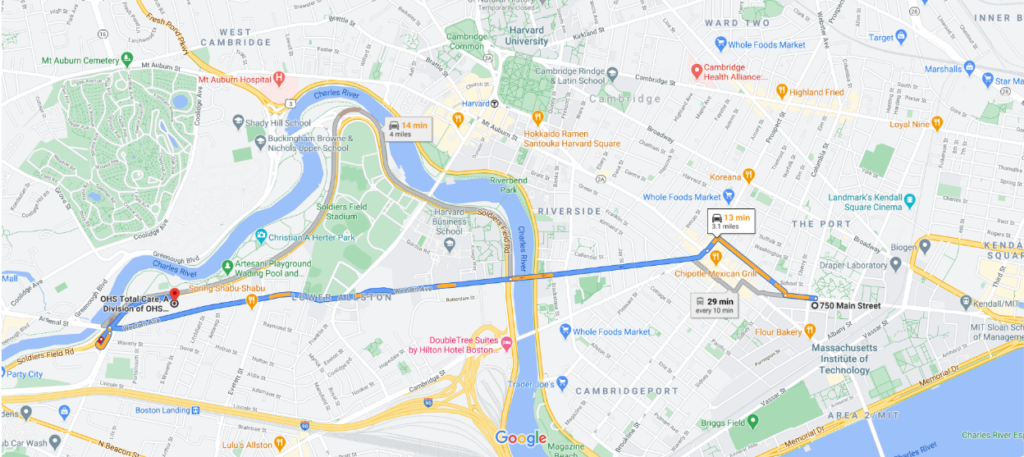
OccMed – Dr. John Burress
10 Hawthorne Place Suite 114 Boston, MA 02114
Phone: (617)367-5002
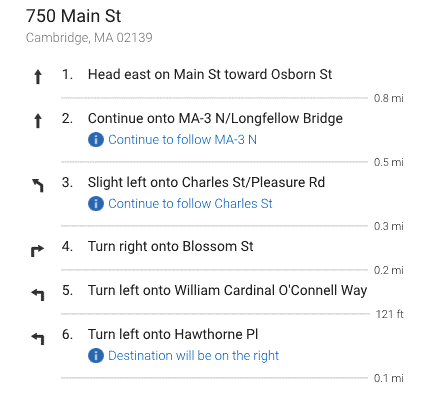

Massachusetts General Hospital Emergency Department
55 Fruit St. Boston, MA 02114
(617)724-4100
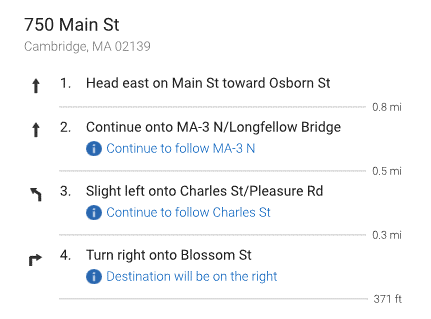
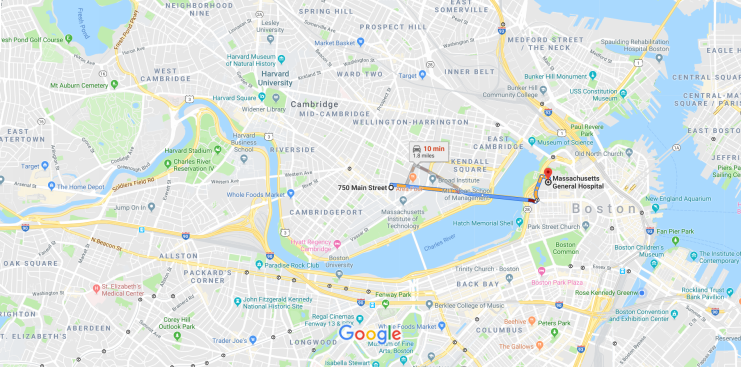
Emergency Procedures: A Consigli representative will be dispatched to the Main entrance(s) of the building/ site to meet the responding Emergency Personnel and advise the individual in charge of the location of the incident as well as any chemicals or hazardous substances that may be present on any of the floors. Safety Data Sheets will be readily available if needed by the Cambridge Fire Dept.
In the event of a serious injury requiring the assistance of Cambridge EMS, the injured worker will be kept as comfortable as possible. Emergency first can be administered if necessary. Under no circumstances will the injured person be moved unless the worker’s life is in danger because of fire or calamity. A worker will be assigned to meet the medical personnel at the above location to direct them to the location of incident.
In the event an evacuation is required all personnel at this job site will follow the building/site evacuation plan and meet at the designated Muster Point (located at the corner of Albany and Main. (see photo)) The foreman for each company will meet at that location and take a head count of their staff and report to Consigli Superintendent. If for some reason a worker is unaccounted for, the fire department will be notified of the last location where the worker was observed.
Muster Point location
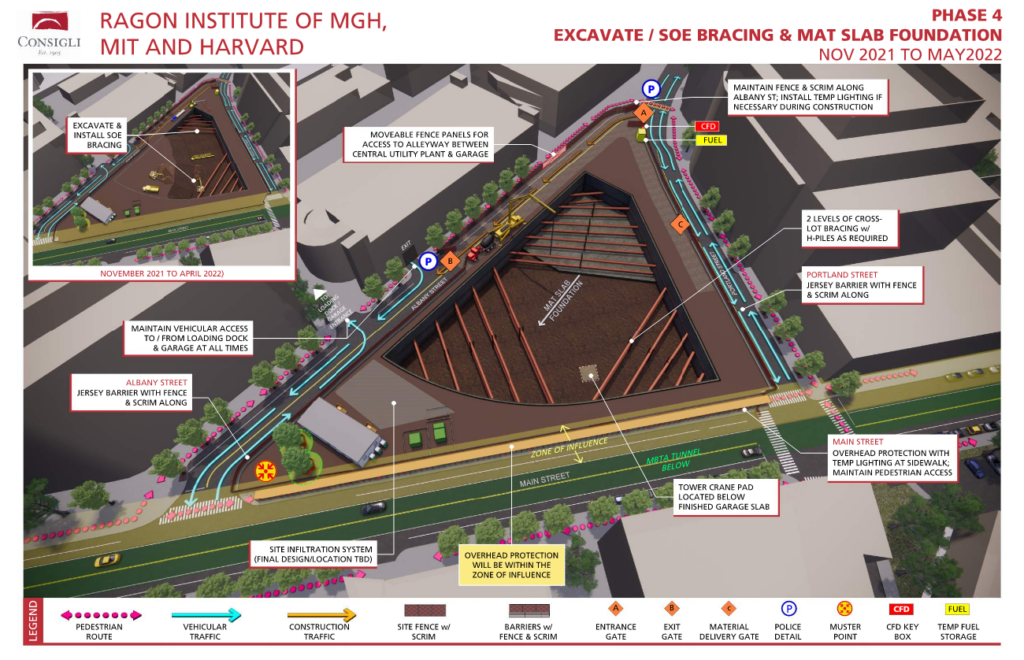
Back– End of Medical Facilities
Site Safety Plan
Scope of Proposed Operations: The Ragon Institute along with their controlling entities, MGH, MIT, and Harvard University, has engaged Consigli Construction Company to undertake the redevelopment of the property located at 600 Main St Cambridge into a life science facility. There will be two below grade levels of parking, one level of amenity space, three levels of research lab space, and offices, and a mechanical penthouse.
The overall project scope begins with abatement and demolition of the existing buildings on the property. Following demolition, site work will commence, entailing of slurry wall installation, bulk excavation, and installation of cross bracing to support the slurry wall. The new building will be constructed of a structural steel structure, and a curtain wall façade. The parcel has property lines along Main Street, Albany St, and Portland St.
Construction traffic will pull in and out of the site via Albany Street, which will remain partially closed to public traffic during the majority of construction. Primary access to the site will be from Albany, Portland, and Main Street. Access to façade elements will be achieved by the use of aerial lifts and scaffolding. Materials, and structural steel will be loaded into the building with a tower crane.
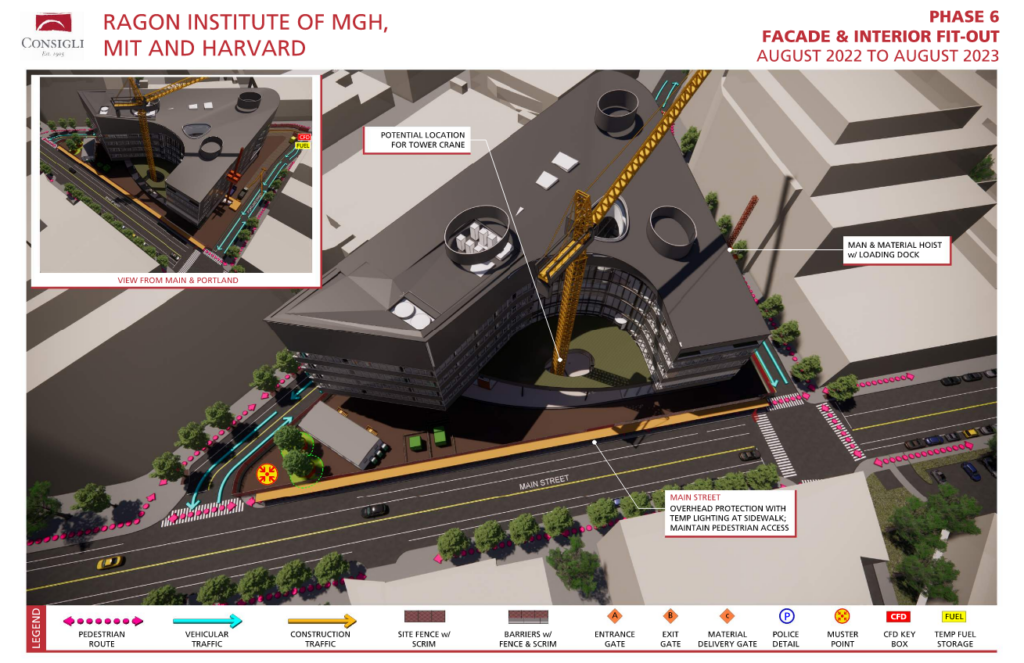
S.A.F.E.: Staying Accident Free Every Day is the Safety Mission that forms the very foundation of the Consigli Safety Culture. The S.A.F.E. mission, which is supported by technology, (Predictive Solutions internal auditing instrument which identifies and defines leading indicator related information); Leadership (Empowering our team members to assure safe projects); Humanization (Protect the ones you love by protecting yourself); Jobsite Gym (Morning warm-up stretch program); Training (Integrating sub-contractors into the Consigli Safety Culture); and Lean (nothing hit the ground), is the driving force behind Consigli’ s drive to our vision – ZERO. ZERO is the philosophy that all accidents are preventable, and that no accident is acceptable. The S.A.F.E. mission is the guiding force to achieving the Consigli Safety Vision which is ZERO.
Identify the specific route in and out of the construction site (Traffic Management): Main construction access will be restricted to routes pre-determined by Consigli. All contractors will be responsible for adhering to Cambridge and Consigli restrictions and regulations regarding driving, parking and delivering materials. Pedestrians will be given the right of way at all times. There is no parking allowed on the project.
Construction Air Quality: Construction activities will potentially generate fugitive dust, which could result in localized increase in airborne particulate levels. Fugitive emissions from construction activities will depend upon a multitude of factors such as ambient humidity, recent weather patterns, and phase of construction.
Dust Control
To mitigate dust emissions, the CM and all site related contractors will be utilizing the following measures:
• Wetting agents will be used regularly to control and suppress dust that may come from exposed
excavations, chipping, sawing, etc.
• All trucks for transportation of construction debris will be tarped and their wheels will be cleaned
(if trucks ever leave an asphalt surface). No storage of construction debris will be allowed on site, other than in Dumpsters, which will be
tarped over during non-working hours.
• Construction practices will be monitored to ensure that unnecessary transfers and mechanical
disturbances of loose materials are minimized and that any emissions of dust are negligible.
• Street cleaning shall be provided on an as needed basis.
• During heavy demolition phase, removal of windows will be held off as late as possible to help
contain dust inside the building.
• OSHA Silica Guidelines will be followed for all dust creating activities.
• Compliance with the above-mentioned dust control measures will be monitored during daily
safety walks performed by the site superintendent, as well as the safety manager. Conditions will be
reported daily. Any required adjustments will be communicated to field personnel during daily foreman
meetings.
Designated work hours (any work outside these hours must have prior CCC approval): Project hours are to be 7:00 AM to 3:30 PM, Monday through Friday. Off-hours work must be scheduled with the CCC Superintendent in advance.
Life Safety: A detailed fire protection plan and NFPA 241 plan has been developed with input from Consigli, Code Red, and the building owner. All impairments to existing life safety systems will be correctly permitted and coordinated with the building manager and the Cambridge Fire Department.
Any penetration through smoke and fire walls for new plumbing or electrical circuits necessitates:
- Smoke and fire wall penetrations shall not be left unattended.
- All penetrations are sealed by the end of each work shift.
Notification of Automatic Sprinkler System or Fire Alarm system shall be to:
- Consigli Fire Protection Program Manager
- Cambridge Fire Dept.
- All shut downs shall have a dedicated fire watch.
If it will be necessary to erect hard wall partitions in corridors adjacent to the work space:
- All affected occupants shall be notified of corridor width reduction.
- All occupants shall be aware of primary and secondary routes of egress.
- Additional egress signage shall be posted.
- Corridor storage is prohibited.
Job Safety Analysis (JSA) A JSA shall be conducted for each identifiable feature of work to be performed. The JSA shall be submitted to Consigli superintendent/supervisor. The JSA shall be reviewed Daily, signed by all workers including their supervisor, with all involved personnel performing that particular task.
Demolition: Prior to the start of demo operations, the contractor preforming demo will confirm that all utilities leading into the area have been made safe. The electrician will disconnect and lock out all electrical, the plumber will do the same with any plumbing lines, and the HVAC subcontractor will do the same on the HVAC piping and duct work. Lock out tag out will be reviewed during the pre-construction safety meetings to assure disconnect and responsibility for protection of existing utilities is safe for any construction activities to commence. In spaces where some electrical or mechanical must remain live, a color coding system will be utilized for easy identification of live utilities that must stay active and utilities that must be removed. Any and all utilities spay painted Red are not to be touched and need to be protected during all operations. Utilities spray painted Green are to be removed as part of the selective demolition process only after lock-out/tag-out has been confirmed and utilities tested. If any utilities are unmarked, they shall be considered live. The demo contractor will be responsible for completing CCC demo checklist prior to the start of any work in their target areas
Fall Protection: Project fall exposures include any work on the roof, material hoist and scaffold erection, exterior demolition and new installation, mechanical shafts, and any work on the existing balconies. All work over 6 feet requires some form of fall protection in accordance with CCC fall protection policy. All fall protection for work preformed on Scaffold will be needed at a height of 6 feet or greater. All scaffold erectors will maintain the ability to have fall protection by donning a harness and lanyard at all times during erection. Holes greater than 2” will be covered with acceptable material (3/4 plywood ½ steel) which will be secured and marked hole (cover must be able to withstand four times the intended load). Covers will stay in place until the hole/penetration has been filled. Building perimeters (to be protected with cable guard rail system with turnbuckles to be installed for all straight runs and any straight run over 100 feet. Before any work is to begin on the roof it must be determined what method of fall protection will be implemented (fall protection plan, 100% tie off, guard rails, flagging etc.) All workers working on a roof with a slope greater than 4 to 1 and exposed to a fall greater than 6 feet will be tied off 100% of the time spent in this location. Workers on a roof with a slope less than 4 to 1 may put flagging (six feet for roofers-15 feet for everyone else) lines up, whenever roofers and any other trade are on the same roof then the flagging must be pulled back to the maximum distance. Holes greater than 2” will be covered with acceptable material (3/4 plywood ½ steel) which will be secured and marked hole (cover must be able to withstand 2x the intended axle load). Covers will stay in place until the hole/penetration has been filled with duct or Pipe riser which extends above the deck.
**Review Chapter 13 for more detail**
Work on Ladders: All work on step ladders/straight ladders will be done correctly per manufacturer’s recommendations. Any worker who is on a step/straight ladder and could be exposed to a fall greater than the height of their work on the ladder will be required to install a form of fall protection. Step ladders will not be used as a form of access to a walking /working level, also all straight ladders will be tied off when installed for use. Only ladders with a rating Type 1A or 1AA will be allowed on Consigli projects.
Scaffold and elevated work platforms: When scaffolds are to be used, all scaffolds, material hoist, mast climber, supported frame, pipe staging shall be inspected daily before each shift by a competent person designated by each individual contractor who will be using it, which will be documented on Inspection tags located at the stair tower/access point to each section. A scaffold inspection guide will be provided to each designated person (upon request) by Consigli Construction to aid them with their inspection. All contractors who will be erect scaffold will provide CCC with certification/Qualification of scaffold erection training as well as an erection/dismantling plan. Fall protection is required 100% during erection/dismantling. Overhead protection will be provided for all access points to any buildings located under any form of scaffolding/material hoist.
Consigli Safety Program requires that all rolling scaffolds (baker scaffolds) be equipped with guardrails when the working deck is above 4 feet. Outriggers are required for all rolling scaffolds when the working height reaches 2x the width of the scaffold.
** Please review chapter 14 for additional details. **
Aerial/Scissor Lifts: Lifts will be required for work on the project. The area, ground conditions, slab strength, in the intended work zone, will be inspected for overhead power lines, sink holes, covers, or any other unsafe conditions which cause an unsafe incident. Aerial lift platforms will be inspected daily before each shift by a competent person designated by the affected employer. All who will be performing work from an aerial lift will show documented proof of training prior to using the lift. Steel plates or equipment mats will be placed on the ground above any utility/ steam tunnel if there will be Aerial lifts operating on them. Workers will be tied off at all times when using an aerial lift.
Chemical and Materials: All Materials and chemicals used on-site will have Safety Data Sheets (SDS) provided before being brought onsite.
- SDS sheets on file in Consigli Construction’s Site Safety Plan
- All SDS sheets shall be readily accessible.
** Please review chapter 20 for additional details. **
Fire Protection: The Consigli hot work permit program will be implemented for any hot-work that is required. This will be coordinated through Consigli, and Cambridge Fire Department. Any hot work will stop one hour before the regular end of the day work stoppage. Flammables will not be stored inside the building or left overnight on the scaffold or in the building. All combustible or flammable materials will be stored in an appropriately rated lockable cabinet located no closer than 50 feet from the nearest structure. Fire extinguishers will be provided for every 3000 square feet. They will be installed on job made stands and conspicuously located throughout. They will be part of the daily inspection with the extinguisher log completed monthly. Storage of any acetylene cylinders will be done in a secure and upright area, with good ventilation and under permit from the Cambridge Fire Department. This will be a strict no smoking project. All penetrations leading outside of the construction area will be fire stopped using approved fire rated material prior to the end of each shift. ALL workers will comply with the 241 plan and CFD/NFPA Hot Work Training Requirements.
**Review Chapter 17 for more detail.**
Electrical: All electrical tools, cords and equipment must be in good working order. To that end, all electrical tools and components must be visually checked on a daily basis. Any tools with damaged cords or damaged cords must be taken out service… All cords must be equipped with a ground pin, flat three wire cords are not allowed. SJO and SJT or other similarly rated cords only shall be used. The electrician will be responsible for all temp power and any temp lighting that may be needed. They will coordinate all lock out tag out procedures. All temporary power for the project will be installed on protected and dedicated circuits with 100% GFCI protection. GFCI will be tested by the electric contractor weekly to assure proper function with a log book filed with CCC monthly. No live electrical work will be conducted.
**Review Chapter 26 for more detail**
Cranes: Crane work plans must be submitted to the CCC safety Department prior to crane mobilization on-site. This work plan must also include the FAA criteria letter of determination with regards to crane proximity to flight lines. There is a requirement to assure that certified riggers, signalmen, and crane assemblymen are utilized. All picks are to be done by a licensed operator. As previously mentioned, a detailed pick plan will be required to assure that no picks are critical in nature. Critical picks are defined as those involving 2 cranes lifting simultaneously, a pick that is over 75% of capacity, a pick that involves the lifting of a man basket, or any other lift that is deemed to involve special conditions. Location and set up will be reviewed with crane operator prior to set up and pick. All lifting operations will require that the operator and any involved contractors follow the steps listed below as well as in CCC Crane Safety policy.
1. All Hoisting equipment will have an up to date 3rd party inspection certificate with the equipment which will be copied and filed in the office trailer.
2. All lattice boom cranes will have an independent 3rd party inspection completed each time one is set up on the project, after assembly and prior to operation.
3. All equipment operators will be required to have in their possession all appropriate licensing and training as required by OSHA and the Commonwealth of MA.
4. All underground vaults and existing utilities will be marked before as well as before any crane is set up.
5. Documented rigging equipment inspections.
6. Documented daily crane inspections filed with CCC weekly.
7. Documented rigger and hand signalman training will be provided
** Please review chapter 24 for additional details.**
Confined Space: A written plan will be needed to work in any tanks/vaults and crawl spaces during this project which have been designated permit confined spaces by CCC, this plan must include air monitoring.
** Please review chapter 21 for additional details. **
Designated First Aid Plan: All injuries no matter how minor must be reported to Consigli Superintendent immediately. The superintendent will then report all injuries to the CCC Safety Director. A fully stocked first aid kit and blood borne pathogens kit shall be maintained on the project site. Only properly trained personnel will administer first aid. Consigli Construction shall follow Site Safety Plan for first Aid. Report all incidents to the Safety Director.
** Please review chapter 1 and 27 for additional details.**
Substance Abuse: As a condition of employment, all workers are required to submit to a urinalysis test for determination of the presence of illegal substances. A positive result will disqualify the applicant for employment on this project.
Emergency Management Response: In the event of an Emergency the construction workers shall leave the building immediately. Point of assembly/muster shall be at the designated location at the corner of Osborn St. and State St. (as identified on the posted evacuation plan). In the Event of a DISASTER, the Superintendent or Safety director shall instruct the construction workers to leave the site or remain in place and await further instruction. The following steps should be taken in the event of an emergency
When reporting an emergency, please provide the following:
• Your location (refer to site evacuation plan) phone number, and name;
• The location of the incident (building name, floor and room number);
• Nature and extent of the incident (injury, accident, spill, smoke/fire, damage, etc.);
• The name and amount of the material spilled (if applicable); and
• The safest route to the spill (if applicable).
** Please review chapter 8 for additional details.
Minimum Site Safety Requirement: All Consigli workers, and any subcontractors, shall have, at a minimum, an OSHA 10 Hour Construction Safety Outreach training certificate and shall provide documentation of training.
Personnel Protective Equipment (PPE): All CCC and sub contractor workers will wear hard hats and safety glasses at all times. All CCC personnel performing work with their hands shall be required to wear gloves that are appropriate to the task. When not performing actual work with their hands workers will be required to have them available for immediate use. Face shields will be required for all personnel who are performing overhead work, using metal chop saw or any type of metal grinding. All welders will be required to have hard hats with integral welding shields.
Restricted Areas: Contractor and subcontractors’ employees shall enter and exit the building through the designated employee entrances. All contractors must use sanitary facilities provided by Consigli Construction. Work in areas accessible to the public, including deliveries through such areas, shall occur only during hours designated by Consigli.
Lean requirements/Materials Management/Housekeeping:
- No materials shall be delivered to the site earlier than 3 days before said materials are to be installed/put into place. If materials have to be delivered before that 3 day time period, subcontractor shall get prior approval from Consigli Superintendent. Because of this, notification / scheduling is required for all deliveries to the site. Subcontractors must notify Contractor at least 24 hours in advance. Contractor has the right to refuse any deliveries not properly scheduled or due to logistical constraints as necessary.
- All subcontractors’ delivered materials shall be placed on wheeled carts, wheeled racks or in wheeled bins so as to necessitate easy relocation in the event materials need to be moved. Carts, racks, or dollies shall not exceed manufacturers intended weight loads. Materials/tools can be delivered and stored on pallets only if pallet jacks are delivered simultaneously with said delivery to provide for ready mobility. Additionally, pallet jacks need to remain in immediate area. Each subcontractor will need to supply their own pallet jacks for their own materials and keep their pallet jack within reasonable distance at all times.
- All work stations shall be provided with wheeled trash bins for immediate placement of all debris produced as a part of the subcontractors operations. All trash will be immediately placed in wheeled containers provided by Consigli.
- All subcontractors shall use rubber wheeled carts when moving material or removing trash from a building. Any damage caused by the Subcontractor shall be repaired at the cost of the Subcontractor. Back charges will be appropriately assessed for the cost of the repairs. No trash or materials shall be left on the floor.
- Subcontractors shall, where feasible, elevate all electrical extension cords, hoses, or cables – removing them from all walking/working surfaces. Electrical Cords, when elevated shall be supported or suspended in a manner that does not subject them to damage.
- Storage of delivered materials in cardboard containers shall be discouraged. When materials must stay in cardboard containers, said containers shall be removed from the projects immediately after product is unpacked.
- Subcontractor will participate in schedule development meetings as required by Consigli.
Back– End of Site Safety Plan
Environmental Emergency Contact and Management Response
Consigli identified Emergency Response Subcontractor;
Name: Cyn Environmental Services, Inc. (800)242-5818
100 Tosca Drive Stoughton, MA 02072.
Asbestos: Asbestos has been identified in the building. Asbestos abatement will be completed by a licensed/certified contractor. Asbestos has been found in the planned work areas. The complete table and “List of Materials tested, Quantities, and Locations” can be found with the hazardous material report. This does not mean that asbestos could not still be found in other areas, caution must be used when working and if any workers identify any potentially hazardous substances then they should stop and notify their supervisor immediately. All identified asbestos will be fully abated by a licensed and regulated asbestos abatement contractor under a formal plan to be written, submitted and in accordance with the DEP.
IT IS THE RESPONSIBILITY OF ALL SUBCONTRACTOR FOREMEN TO REVIEW THE HAZARDOUS MATERIAL REPORT & CORRESPONDING ABATEMENT REPORT WITH THEIR WORKERS. A copy of the hazardous Material/abatement report will be on site at all times and available to anyone request it.
Due to the fact that some asbestos may remain in place and not be abated during construction all workers will need to have at a minimum Asbestos awareness training.
All work and disposal will be done in compliance with state and federal regulations and standards
Lead: For renovation projects, all painted surfaces both interior and exterior of the existing must be considered lead containing, unless tested and show as otherwise. Consigli workers who will need to perform work on these painted surfaces may need to disturb this paint by drilling, sawing, demo, fastening, or carpentry. In doing so they will use saws, drills, screw guns, impact wrenches, sawzalls, hand wrenches, ads, crowbars, hammers, and other hand tools. Consigli Construction does posses historical data to show that drilling, sawing, light demo, installation of hangers, hanging sheetrock, fastening, and carpentry do not put the employee above the action level. Despite this additional monitoring will be done. An exposure assessment will be done by all subcontractors for all tasks prior to when the full scale of this work is to take place. This does not mean that lead could not still be found in other areas, caution must be used when working and if any workers identify any potentially hazardous substances then they should stop and notify their supervisor immediately. All workers on this must have completed Lead Awareness training prior to starting on this project. Hand wash stations will be provided to ensure proper hygiene during the project. An exposure assessment will also be done for any task which will disturb any lead containing material.
Silica: Any activity which can produce silica dust will use engineering controls to keep dust to a minimum. A written exposure plan must be developed for all silica producing tasks that clearly defines the following: 1) A description of the tasks in the workplace that involve exposure to respirable crystalline silica; 2) A description of the engineering controls, work practices, and respiratory protection used to limit employee exposure to respirable crystalline silica for each task; 3) A description of the housekeeping measures used to limit employee exposure to respirable crystalline silica; and 4) A description of the procedures used to restrict access to work areas, when necessary, to minimize the number of employees exposed to respirable crystalline silica and their level of exposure, including exposures generated by other employers.
There will be no dry cutting of any masonry material allowed; if water cannot be used then a dustless vacuum system consisting of HEPA dustless vacuum system will be used. Prior to the project going full scale an exposure assessment of a worker grinding and cutting masonry while using the HEPA system an exposure assessment will be done so as to establish the silica exposure level. No respirators will be issued without the express consent of the Consigli Safety department. Nuisance mask like an N95 if used will be on a voluntary basis and at no time will these types of mask be issued to the workers.
Polychlorinated Biphenyl’s (PCBs): At this time there are no activities which are planned which would disturb any surface with suspect amounts of PCB’s. This does not mean that regulated levels of PCB’s could not still be found in other areas, caution must be used when working and if any workers identify any potentially hazardous substances then they should stop and notify their supervisor immediately.
Light ballast unless labeled “No PCB’S” will be designated PCB containing, All PCB containing material shall be removed and disposed of in accordance with all local, state (MEMEP Special waste management rules 06-096-CMR 400) and federal regulations and be coordinated with the building owner. All other inquiries or locations in regards to PCB containing material can be located in the Hazardous Material survey. If identified on any of the materials to be impacted, PCB‘s will be abated. Any and all PCB remediation will be performed by a licensed /qualified contractor
** Please review chapter 29 for additional details **
Freon/Glycol: All Freon/Glycol materials will be removed from equipment and stored per manufacturer’s recommendations before it is disturbed, moved or removed. All workers who will be working with the above-mentioned materials must provide CCC with certifications or qualifications. If not re-used, a disposal manifest will be provided to CCC.
Mold: Mold issues are not anticipated to be prevalent on this project, however if mold is discovered Consigli’s mold remediation policy will be implemented and followed.
** Please review chapter 22 for additional details **
Noise: Noise exposure will be a concern, so all operations must be coordinated with the Consigli Superintendent to limit any excess noise impact on the surrounding areas. All activities and tasks which may cause loud noise will be monitored.
** Please review chapter 29 for additional details **
Exposure to the Visitors, Neighbors, and Occupants: Consigli will provide temporary barricades and other forms of protection required to protect the general public from injury due to construction activities. Contractors must provide all temporary barriers necessary to protect adjacent areas from dust, noise, etc.
Fraternization between construction employees and project owners, staff, or visitors will not be permitted. Loud and profane language or clothing with offensive language will not be allowed on the jobsite. Extra efforts must be made to keep noise to a minimum
Working Safely With COVID 19
- Employees experiencing any symptoms (runny nose, headache, cough, sore throat and/or fever) shall stay home and contact your Supervisor. Supervisors should immediately communicate any individuals reporting symptoms to the Consigli Superintendent.
- Any employee that has had contact with someone that has a presumed positive for COVID-19 or someone awaiting testing COVID-19 should stay home and contact their supervisor. Supervisors should immediately communicate any individuals reporting potential contact to the Consigli Superintendent.
- Any individuals that have traveled outside of the United States should stay home and contact their supervisor. Supervisors should immediately communicate individuals reporting foreign travel to the Consigli Superintendent to discuss authorization to work on site.
** This Screening Protocol will be, maintaining proper 6’ spacing, with everyone on site at the start of every shift. **
The following GUIDELINES need to be followed
- Consigli Project Team shall communicate with our customer to confirm we are in compliance with all facility work rules.
- All subcontractor’s Project Managers, Assistant PM’s, Safety Officers, etc. should work remotely.
- Any site visits by non-essential personnel should be discussed with the Consigli project team.
- All meetings will be done via Skype or conference calls.
- All vendors and delivery drivers are prohibited from entering the site. When deliveries arrive near the site, contact the Consigli Superintendent for direction.
- Avoid cafeterias and high activity areas.
- When possible eat outside or in isolated area.
- As much as possible avoid intermingling with other crews or groups
- Prohibit all food and drink inside the work areas
- Any lunch rooms within the work areas should be closed
- Wash or sanitize hands frequently
- Always before and after any lunch period or break time
- Maintain social distancing when practical
- Preferably maintain at least 6’ between yourself and others
- If working with a partner is required assure proper hygiene practices are followed
- Disinfect frequently touched objects and surfaces, such as tools, keyboards, light switches and tables at least twice per day. Most household cleaners, such as bleach wipes or alcohol, will kill the virus.
- Utilize proper etiquette when coughing or sneezing
- Discontinue the use of community water, coffee, or food
Back– End of Environmental Emergency Contact and Management Response